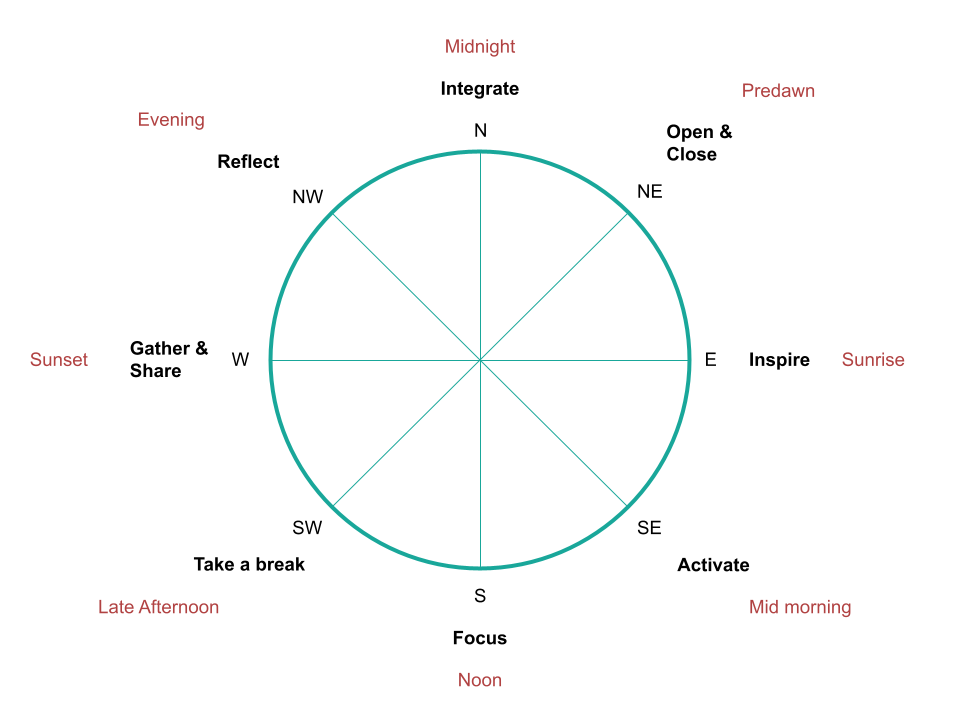Holding space using the natural learning cycle
It is now widely believed that to tackle the sticky and complex challenges of our era we need genuine cross-sector collaboration held in spaces where a diverse group of people can recognise local challenges and design solutions to address them1. To do this, we need good facilitators, and good facilitators need good frameworks. In this blog, I would like to share my experience and learnings of one framework that has profoundly impacted the way I facilitate and hold space through Resilience Brokers projects.
It was a vibrant and balmy week during the summer of 2022 when I was invited to the grounds of Hawkwood college. Birds filled the space in their free jazz orchestra; ash, oaks, beech and living fossils lined our paths. I drank from a natural spring that generously spilled out at the foot of an ancient sycamore tree, and the rich tapestry of life invited our cohort to learn and imagine.
My intention was to develop my skills as a facilitator and how to activate genuine collaboration and imagination by embodying nature. I pursued this intention alongside fellow changemakers, activists, learners and unlearners. Over the space of a week we learnt how nature invites us to hold space with empathy, pace and humility. We learnt and practised frameworks that will support us in facilitating diverse groups of people.
A facilitation framework that inspired me and I now use to help hold collaborative spaces in live Resilience Brokers projects is Jon Young’s Natural Learning Cycle2. This provides facilitators with a framework for designing and facilitating learning experiences that follow the natural cycle of a day, year or life. I will use the natural cycle of a day as an analogy to show how a facilitator could use the framework to hold a collaborative space:
- A facilitator must open a space, similar to awakening into a new day;
- Much like a vibrant sunrise with its complexity of colours and aurora of possibilities, the facilitator should inspire the group;
- Mid-morning we may begin to feel the urge for movement and creative growth; at this point, the facilitator should encourage a sense of play to activate the group;
- Noon is a time to focus; work on the key area the group would like to collaboratively explore;
- Late afternoon, the perfect opportunity to take a break. A phase everybody enjoys!;
- The deep hues of a sunset is the perfect time for storytelling, the group may wish to gather and share what they have learnt;
- The twilight of evening naturally elicits contemplation and invites the group to reflect on their experience;
- During the deep of night, integrate all that you have learnt; midnight is a time for wisdom;
- Gently close the space.

If you choose to facilitate in nature, maybe allow nature to do the talking during certain phases. I invite you, perhaps at this moment or after reading this piece, to find a quiet space in nature. Be present. Recognise the possibilities for facilitating in nature and how your landscape of choice could be used as a great plateau for imagination activation.
It is appropriate to hold the natural learning cycle loosely and not create a contrived session around a rigid framework. Often, phases can merge or the intention behind a phase can be more subtle based on the context or the energy of the group. Also, try to avoid the temptation of spending the majority of time in the ‘focus’ phase’. You will not get the best out of a group through hard work alone!
Through practising the natural learning cycle, I learnt to hold space with intention – from the heart as well as the head. I recognised the importance of silence and space, the art of simplicity, to let nature do the talking and empathetically invite people to embody the experience.
Effective collaboration across diverse groups requires good and empathetic facilitation, which is ever more important as regions face the many local and global challenges. The natural learning cycle is a framework that can support facilitators in bringing together disparate groups, activating collaboration & imagination, and inviting people to recognise & share genuine intention from the heart as well as the head.
I invite you to explore and use the natural learning cycle in the collaborative spaces you hold, whether that be through projects or with friends and family. When you do find yourself holding space, be sure to recognise your own personal intention.
Thank you to the Change in Nature team for introducing this important framework during their Facilitation for Transformation course.
. . .
1KEY CITIES (2022). The Healthy City: A futuristic reimagining of the Urban economy and built environment. PP 33-34
2YOUNG, J., HAAS, E., & MCGOWN, E. (2010). Coyote’s guide to connecting with nature. Shelton, Wash, OWLLink Media.
. . .
To join this discussion feel free to contact teams@resiliencebrokers.org
. . .
Photo by @chrislawton found on Unsplash
